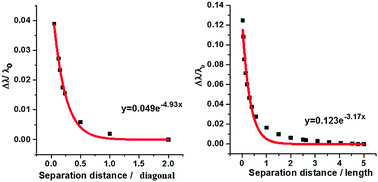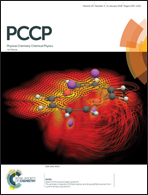Refractory plasmonics: orientation-dependent plasmonic coupling in TiN and ZrN nanocubes
Abstract
Transition metal nitrides have recently been considered as potential replacements for noble metals as plasmonic materials. In particular, the localized surface plasmon resonance (LSPR) of refractory transition metal nitrides, such as TiN and ZrN, is an interesting option for plasmonic-based devices. Using FDTD simulations, the extinction, absorption and scattering cross sections were calculated for a pair of 42 nm TiN nanocubes, along with the electric field intensity “modes” for several separation distances. The face-to-face and edge-to-edge orientations were investigated and a plasmon ruler equation was derived from the exponential fitting for both orientations. It was found that the smaller the separation distance, the more the coupling achieved. The results of different combinations of materials for nanocube pairs, such as TiN, ZrN, Ag and Au combinations, were also obtained. The (Ag–Ag) showed the highest electric field intensity, (Au–Au) was the second and (ZrN–ZrN) was quite close to gold. Upon decreasing the separation distance, a red-shift in the wavelength of the plasmon peak was observed. The separation distance at which the TiN nanocube pair showed an LSPR wavelength equivalent to that of an isolated nanocube was identified. The “hot spot” region between the nanocubes was also identified, which is very important for many applications such as cancer therapeutics, imaging, sensing, photovoltaic solar cells, surface enhanced Raman scattering, near field scanning optical microscopy, water splitting and nanoscale optical devices.



 Please wait while we load your content...
Please wait while we load your content...